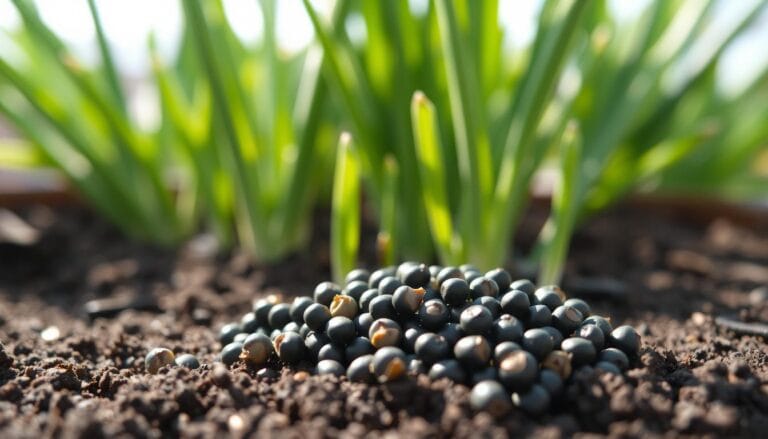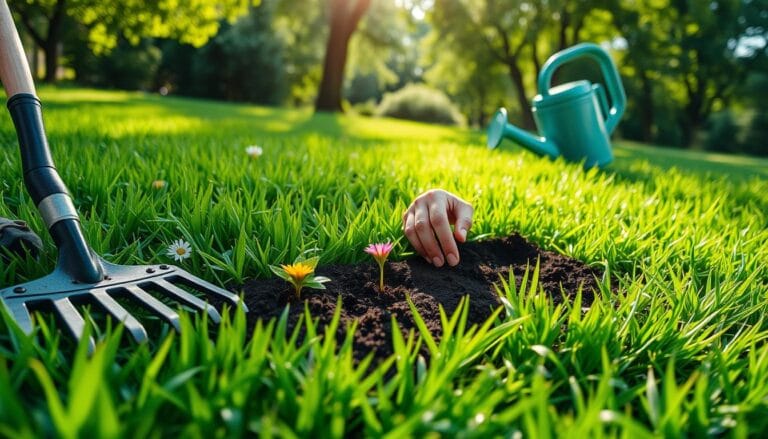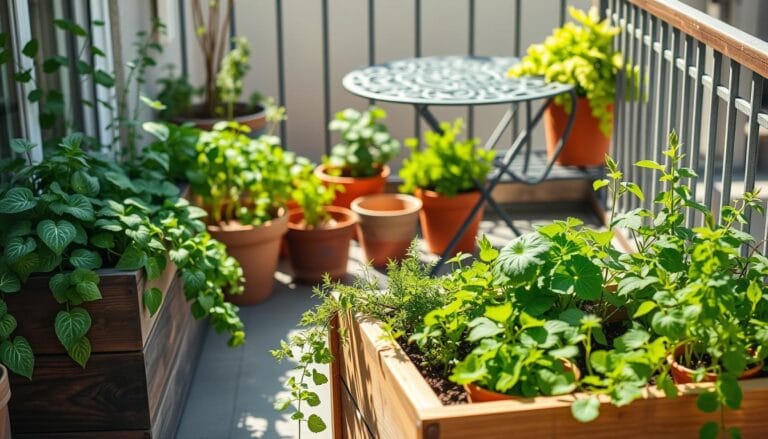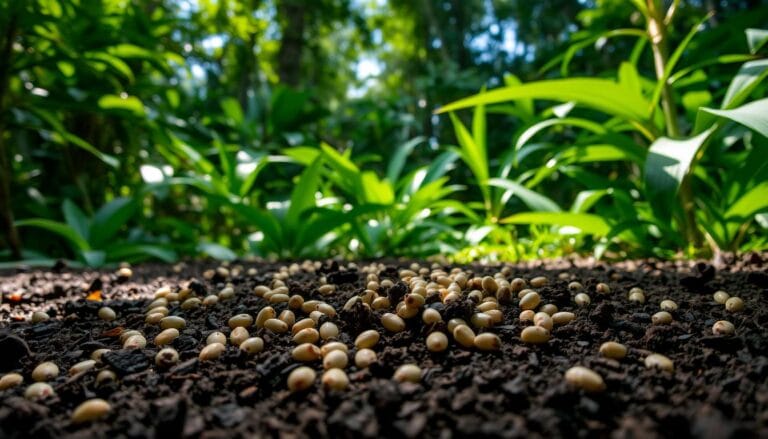Water-Wise Gardening: Sustainable Techniques for a Thirsty World
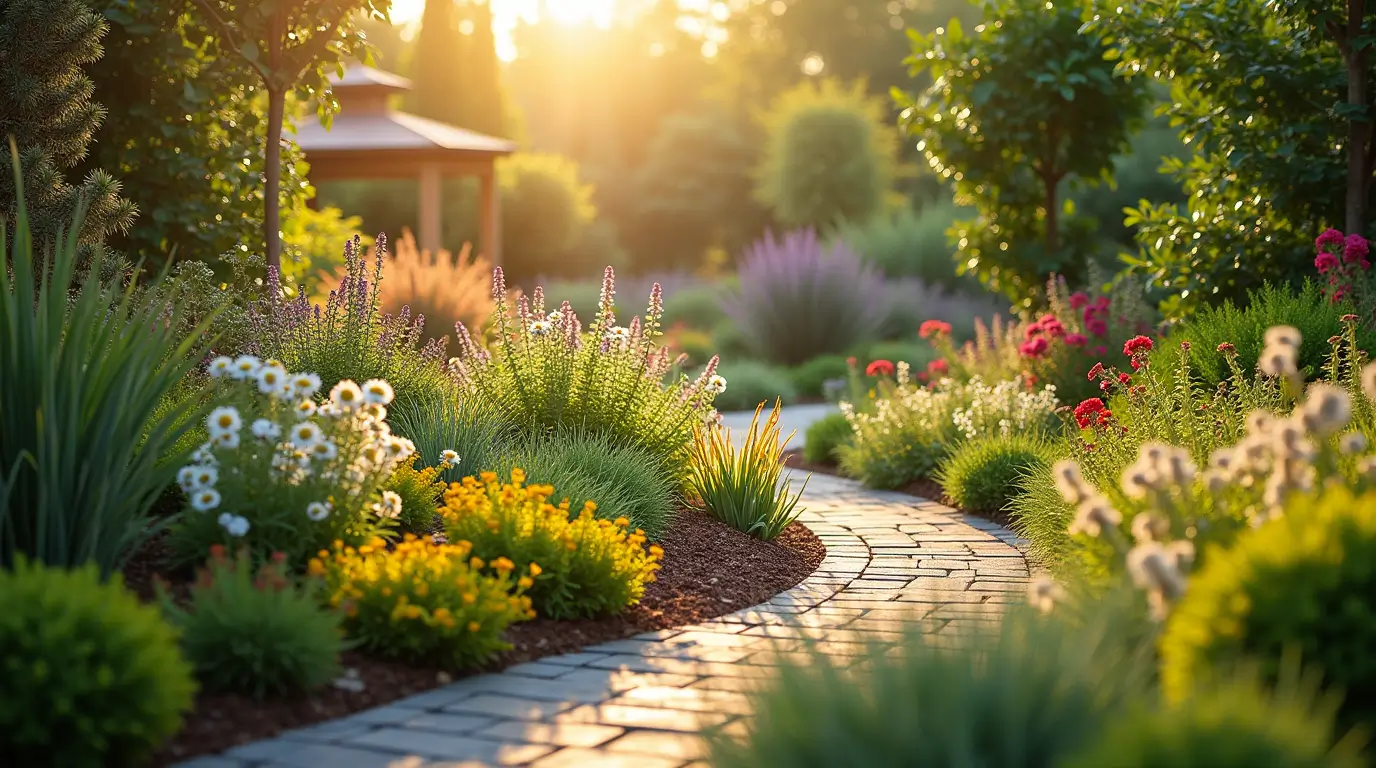
Did you know that over 50% of residential water use is dedicated to landscaping? As water scarcity becomes a pressing issue worldwide, it’s time for gardeners to rethink traditional practices and embrace water-wise gardening. In today’s post, we’ll explore innovative techniques that not only conserve water but also create thriving, beautiful gardens. Whether you’re interested in drought tolerant landscaping, learning about xeriscaping techniques, or mastering efficient irrigation methods, this comprehensive guide is designed to provide actionable insights and data-driven recommendations for every green thumb.
Table of Contents
I. Introduction
Water scarcity poses a significant challenge for gardeners everywhere. The excessive use of water for irrigation, combined with shifting climate patterns, calls for a sustainable approach to gardening. Water-wise gardening offers an environmentally friendly solution by reducing water consumption while still enabling you to cultivate a vibrant garden.
Problem Statement:
Traditional gardening methods often lead to water waste and increased utility bills, especially in areas prone to drought. The excessive watering not only strains local water supplies but also contributes to soil erosion and plant diseases.
Solution:
By implementing water-wise gardening techniques, you can create a resilient garden that uses water efficiently, adapts to climate challenges, and conserves this precious resource. This guide will cover everything from understanding water needs and improving soil water retention to advanced irrigation methods and rainwater harvesting.
Thesis Statement:
In the sections that follow, we will delve into the mechanics of the water cycle in your garden, assess plant water requirements, explore methods to improve soil water retention, discuss efficient irrigation techniques, and more—all designed to help you build a garden that thrives with minimal water.
II. Understanding Water Needs
An essential foundation of water-wise gardening is understanding how water interacts with your garden. This knowledge enables you to make informed decisions about watering practices and plant selection.
A. The Water Cycle in Your Garden
Water moves through your garden via precipitation, evaporation, transpiration, and runoff. Visualizing this cycle helps clarify how moisture is absorbed, stored, and eventually lost in the ecosystem.
- Precipitation: Rainfall and dew contribute to soil moisture.
- Evaporation: Water evaporates from soil surfaces and plant leaves.
- Transpiration: Plants release water vapor through their leaves.
- Runoff: Excess water that the soil cannot absorb drains away.
Infographic Tip: Consider creating a simple diagram illustrating these processes to better visualize the cycle.
B. Different Plant Water Requirements
Not all plants require the same amount of water. By categorizing plants based on their water needs, you can design a garden that optimizes water use:
- High Water Needs: Vegetables and some ornamental flowers.
- Medium Water Needs: Many perennials and shrubs.
- Low Water Needs: Succulents, native species, and Mediterranean plants.
Hydrozoning involves grouping plants with similar water requirements together, ensuring that each section of your garden gets the right amount of moisture.
C. Assessing Soil Moisture
Knowing your soil’s moisture content is key to avoiding both under- and overwatering. Here are a few methods:
- Visual Inspection: Look for signs of dryness or excessive moisture.
- Soil Moisture Meter: Provides a quick digital reading, though accuracy may vary.
- The “Squeeze Test”: Grab a handful of soil; if it crumbles easily, it’s dry; if it forms a ball, it’s too wet.
D. Factors Affecting Water Needs
Several factors influence how much water your garden requires:
- Climate: Temperature, humidity, and rainfall play significant roles.
- Soil Type: Sandy soils drain quickly, while clay soils retain water.
- Plant Type: Different species have unique water requirements.
- Sun Exposure: Areas with full sun require more frequent watering compared to shaded spots.
III. Improving Soil Water Retention
Healthy soil is the cornerstone of a water-wise garden. Improving soil structure can significantly enhance its water-holding capacity.
A. Adding Organic Matter
Organic matter, such as compost and aged manure, is essential for water retention. It improves soil structure, enhances nutrient availability, and promotes beneficial microbial activity.
- Benefits: Increased moisture retention, improved soil fertility.
- Types: Compost, leaf mold, and aged manure.
- Application: Mix organic matter into the topsoil before planting.
B. Mulching
Mulching is an excellent way to reduce evaporation and maintain soil moisture.
- Benefits: Conserves water, controls weeds, and moderates soil temperature.
- Types:
- Organic Mulch: Wood chips, straw, shredded leaves.
- Inorganic Mulch: Gravel, stones.
- Application Tips:
- Spread a 2-3 inch layer around plants.
- Keep mulch a few inches away from plant stems to prevent rot.
C. Reducing Soil Compaction
Compacted soil hinders water infiltration and root growth.
- Methods to Reduce Compaction:
- Aeration: Use a garden fork or aerator tool.
- No-Till Gardening: Minimize disturbance to preserve soil structure.
- Benefits: Improved water absorption and root development.
D. Using Soil Amendments
Certain soil amendments can further enhance water retention.
- Examples: Water-retaining polymers, biochar.
- Choosing Amendments: Match the amendment type to your soil’s needs, considering factors like pH and texture.
IV. Efficient Irrigation Techniques
Implementing efficient irrigation methods is vital for reducing water waste and ensuring plants receive the optimal amount of moisture.
A. Drip Irrigation
Drip irrigation is among the most effective efficient irrigation methods available.
- Benefits:
- Targets water directly to the plant roots.
- Reduces evaporation and weed growth.
- Components:
- Timer, backflow preventer, filter, pressure regulator, tubing, emitters.
- Installation Tips:
- Map out your garden’s layout.
- Install emitters near the root zone.
- Maintenance: Regularly check for clogs and leaks to maintain efficiency.
B. Soaker Hoses
Soaker hoses provide a simple yet effective way to irrigate your garden.
- How They Work: Slowly release water along their length.
- Installation Tips: Lay hoses along garden beds and cover with mulch to improve efficiency.
- Benefits: Even water distribution with minimal waste.
C. Smart Sprinkler Systems
Modern smart sprinkler systems take the guesswork out of watering by using technology to optimize schedules.
- How They Work: Use weather data and soil moisture sensors.
- Benefits:
- Save water through precise timing.
- Enhance convenience with automated systems.
- Popular Brands: Research current models to find the system that best fits your garden’s needs.
D. Hand Watering
While not as automated, hand watering allows for precision and care.
- Techniques:
- Water deeply and infrequently.
- Use a watering wand or nozzle to direct water to the soil.
- Water early in the morning to reduce evaporation.
V. Rainwater Harvesting
Harvesting rainwater is a sustainable way to supplement your garden’s water needs while reducing reliance on municipal sources.
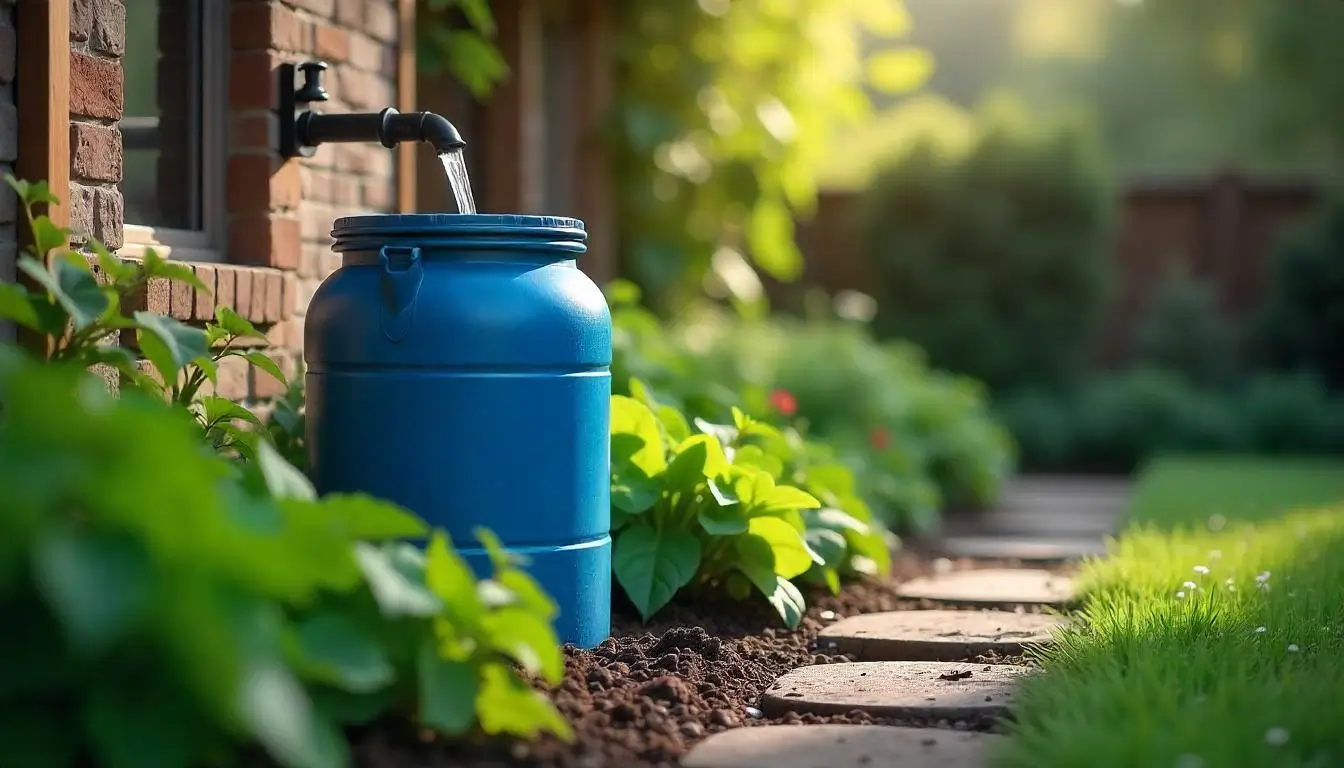
A. Benefits of Rainwater Harvesting
- Conserves Water Resources: Captures free, natural water.
- Reduces Stormwater Runoff: Minimizes erosion and pollution.
- Cost-Effective: Decreases water bills by using stored rainwater for irrigation.
B. Rain Barrel Systems
Rain barrels are an accessible entry point for rainwater harvesting.
- Types: Plastic, wooden, or metal barrels.
- Choosing a Rain Barrel:
- Consider capacity and durability.
- Ensure it has a proper spigot for easy water access.
- Installation:
- Connect to a downspout.
- Use a screen to prevent debris and mosquitoes.
C. Rainwater Harvesting for Larger Gardens
For larger gardens, consider advanced systems such as:
- Storage Tanks: Larger capacity for more extensive irrigation needs.
- Pond Liners and Filtration Systems: Ensure water quality.
- Pumps: To distribute water throughout the garden.
D. Legal Considerations
Before setting up your rainwater harvesting system, check local regulations to ensure compliance with water collection laws.
VI. Xeriscaping
Xeriscaping is an innovative landscaping method that emphasizes water conservation through thoughtful design and plant selection.
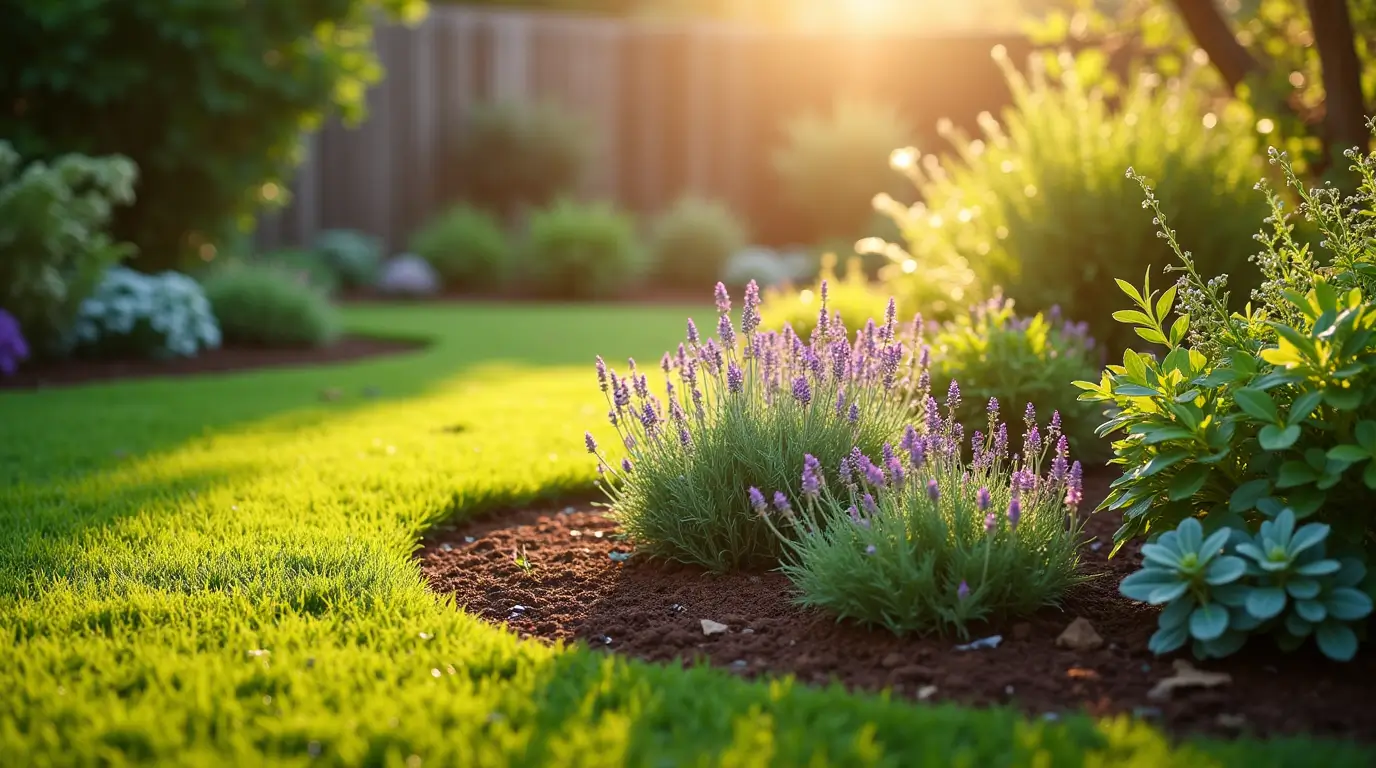
A. Principles of Xeriscaping
- Planning and Design: Create a layout that minimizes water usage.
- Soil Improvement: Enhance soil’s water retention capabilities.
- Efficient Irrigation: Utilize drip irrigation and smart watering systems.
- Appropriate Plant Selection: Choose plants suited to your local climate.
- Mulching: Use mulch to conserve moisture.
- Turf Alternatives: Replace water-hungry lawns with drought-tolerant groundcovers.
B. Designing a Xeriscape Garden
- Water-Wise Landscape Plan: Group plants by water needs.
- Plant Selection: Opt for native species and succulents that thrive in dry conditions.
- Grouping Techniques: Implement hydrozoning to optimize irrigation and reduce waste.
C. Examples of Xeriscape Gardens
Xeriscaping can result in stunning, low-maintenance gardens. Explore examples featuring:
- Desert Blooms: Use cacti, agaves, and other succulents.
- Mediterranean Themes: Incorporate lavender, rosemary, and olive trees.
- Modern Designs: Combine rock elements, gravel, and minimalist plantings.
Tip: Browse online galleries for inspiration and practical layout ideas.
VII. Choosing Drought-Tolerant Plants
A critical element of water-wise gardening is selecting plants that naturally thrive under low-water conditions.
A. Understanding Drought Tolerance
Plants adapt to dry conditions through various mechanisms such as deep root systems, reduced leaf area, or succulent leaves. Understanding these adaptations helps you choose species that require minimal supplemental watering.
B. List of Drought-Tolerant Plants
Here’s a quick reference table to guide your plant selection:
| Plant Type | Examples | Water Needs |
|---|---|---|
| Trees | Mesquite, Olive | Low |
| Shrubs | Lavender, Sage | Low |
| Flowers | California Poppy, Blanket Flower | Low-Medium |
| Groundcovers | Sedum, Creeping Thyme | Low |
| Vegetables | Some heirloom tomatoes, Peppers (in dry climates) | Medium |
C. Resources for Finding Drought-Tolerant Plants
- Local Nurseries & Garden Centers: Seek advice on region-specific plants.
- Native Plant Societies: Join groups to exchange knowledge and tips.
- Online Plant Databases: Research and read reviews on drought-tolerant species.
VIII. Watering Schedules and Techniques
A well-planned watering schedule is essential to maximize water efficiency and plant health.
A. Determining Watering Frequency
- Factors to Consider:
- Plant type and age
- Soil type and moisture level
- Local climate conditions
- Seasonal changes
- Tip: Use soil moisture sensors or conduct visual inspections to adjust your watering schedule.
B. Best Times to Water
- Morning Hours: Watering early in the day reduces evaporation.
- Avoid Midday: High temperatures increase water loss.
- Evening Caution: If watering later in the day, ensure there is enough time for the water to soak in before nightfall.
C. Watering Techniques
- Deep Watering: Encourage roots to grow deeper by watering slowly and deeply.
- Avoid Foliage: Watering directly on the soil helps prevent fungal diseases.
- Use of Tools: Consider using watering wands or nozzles to control flow and avoid runoff.
IX. Greywater Recycling (Check Local Regulations!)
Recycling greywater can further enhance your garden’s water efficiency, but it requires careful planning and adherence to local laws.
A. What is Greywater?
Greywater is the relatively clean wastewater from showers, sinks, and washing machines. It is distinct from blackwater, which contains toilet waste.
B. Benefits of Greywater Recycling
- Water Conservation: Reuse water that would otherwise be wasted.
- Reduced Wastewater Discharge: Helps manage environmental pollution.
- Cost Savings: Lower water bills and resource usage.
C. Greywater Recycling Systems
Options vary from simple bucket systems to more elaborate filtration units that make greywater safe for garden use.
D. Safety Considerations
- Usage Limitations: Do not use greywater for edible plants unless properly treated.
- Soap Selection: Use biodegradable soaps and detergents.
- Regulatory Compliance: Always verify local guidelines regarding greywater use.
X. Building a Rain Garden
Rain gardens are an innovative way to manage stormwater runoff while enhancing your garden’s ecological value.
A. What is a Rain Garden?
A rain garden is a shallow depression designed to capture and filter stormwater runoff. It plays a dual role of conserving water and improving water quality.
B. Benefits of Rain Gardens
- Stormwater Management: Reduces runoff and erosion.
- Water Quality Improvement: Filters pollutants before they reach waterways.
- Wildlife Habitat: Supports beneficial insects, birds, and other fauna.
C. Designing a Rain Garden
- Site Selection: Identify an area that collects runoff.
- Size and Shape: Base dimensions on the drainage area.
- Soil Preparation: Enrich the soil with organic matter.
- Plant Selection: Choose native plants that tolerate both wet and dry conditions.
D. Maintaining a Rain Garden
- Regular Weeding: Keep invasive species at bay.
- Mulching: Helps retain moisture and control weeds.
- Pruning: Maintain plant health and aesthetic appeal.
XI. Conclusion
Water-wise gardening is not just a trend—it’s a necessary evolution in how we interact with our natural environment. By understanding water needs, improving soil health, using efficient irrigation methods, and selecting drought-tolerant plants, you can create a sustainable and beautiful garden that minimizes water waste and thrives even in challenging conditions.
Key Takeaways:
- Embrace Efficiency: Adopt efficient irrigation methods like drip irrigation and smart sprinkler systems.
- Optimize Your Soil: Incorporate organic matter, use mulch, and reduce soil compaction to improve water retention.
- Plan Thoughtfully: Design your garden with hydrozoning and xeriscaping principles in mind.
- Innovate: Explore sustainable practices such as rainwater harvesting and greywater recycling (while checking local regulations).
As you plan your next gardening project, consider these water-wise strategies as a roadmap to sustainability. Not only will you enjoy reduced water bills and a more resilient garden, but you’ll also contribute positively to water conservation efforts. Embrace drought tolerant landscaping and xeriscaping techniques to cultivate a garden that is as eco-friendly as it is beautiful.
Call to Action:
Ready to transform your garden into a model of sustainability? Start small by testing out drip irrigation or adding a rain barrel system, and gradually expand your water-wise practices. For more tips and ideas, explore our related articles on sustainable gardening, efficient irrigation, and organic soil amendments.
Interactive Suggestion:
Share your water-wise gardening journey in the comments below or join our community forum for ongoing discussions and support from fellow gardeners.
By integrating these techniques, you’ll be well on your way to creating a thriving, sustainable garden that not only stands the test of time but also sets an example for responsible water use in an era of increasing scarcity. Happy gardening!
There are no reviews yet. Be the first one to write one.

